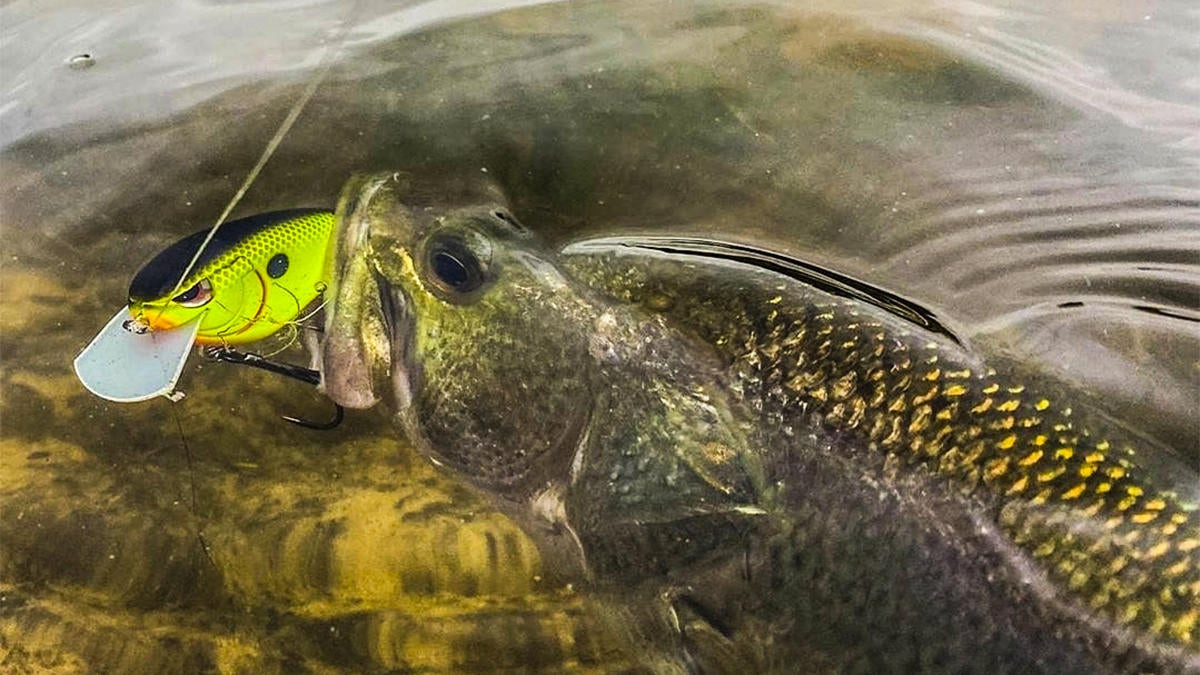Spencer Shuffield dives deep into the subject of when, where, and how to catch fall bass using squarebill crankbaits in this extremely insightful and informative video (product links below). Spencer starts by stating that squarebills should be top-of-mind if you’re fishing shallow and around cover (especially hard cover). Rapid declines in water temperatures are common during the fall months and severely affect shallow bass. Unlike most moving baits, squarebills allow you to drastically SLOW DOWN your retrieve, all the while making constant contact with cover and triggering reaction strikes.
TACKLE USED
- Hardcore Crank SR 65F, color: Citrus Shad
- Yo-Zuri T-7 Premium 100% Fluorocarbon, 16lb (avail on basspro.com mid-March)
- Current line option, Yo-Zuri Top-Knot 100% Fluorocarbon, 16lb
- Daiwa Tatula SV TWS Casting Reel, 6.3:1
- Phenix X-Series Composite Crankbait Casting Rod, 7′ Heavy
- Garmin EchoMAP Ultra 106SV Sonar
- Garmin Panoptix LiveScope System
- Minn Kota Ultrex Trolling Motor
Shuffield’s Top 5 Tips for Dialing in the Fall Sqarebill Bite:
- Slow down. If water temps have experienced a rapid decline, bass attitude has likely shifted negative too. This is a prime situation to slow down your lure retrieve speed while making continual contact with the cover. A squarebill lets you do that. A lipless crankbait does not.
- Target the far backs of pockets, creeks, or ditches. It’s common for fall bass to push baitfish in these areas, which are also laden with cover. A squarebill is the tool of choice for covering water in snag-infested areas.
- Fish channel swing banks. Both main river channel and creek channel swings are prime locations for squarebilll cranking as bass transition toward their final wintering locations. These areas are often composed of rock or a mixture of rock and wood.
- Shallow flat drops. Shuffield’s favorite squarebill spots are the edges where flats meet the first drop-off, as seen in this video. These are perfect fall transition locations and the last place bass stop before heading out to the river channel. These aren’t obvious locations to the naked eye, so receive less angling pressure. Find these spots by studying map contours then scanning the edges for isolated wood cover.
- Choose a forgiving reel and rod setup. Shuffield stresses the need to slow down, so advises using a casting reel with a 6.3:1 gear ratio. Pair it on a moderate power rod with a parabolic action to “give” the bass time to get the bait in their mouth and reduce tearing off skin-hooked bass. Choose a line diameter that helps you dial in the bait’s running depth while providing enough horsepower to extract them from the cover.
















